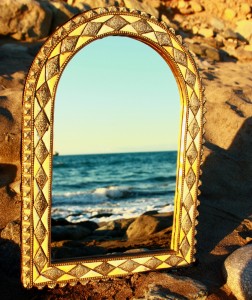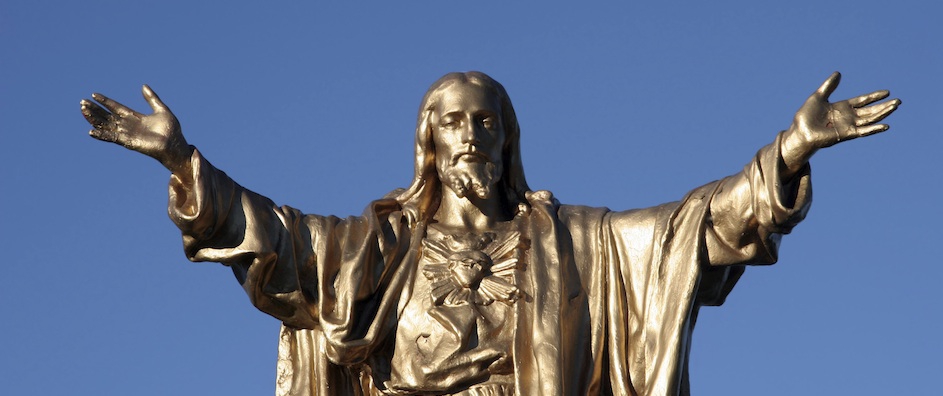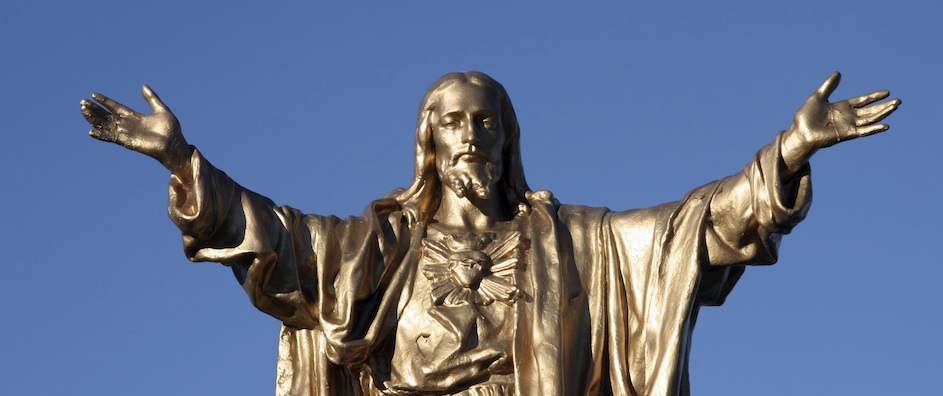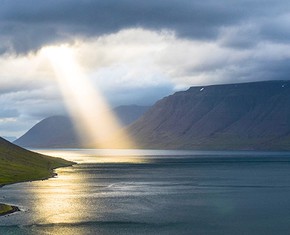The views expressed in our content reflect individual perspectives and do not represent the authoritative views of the Baha'i Faith.
It would appear that Scripture presents us with a paradox: Christ is, and is not, God.
Consider the juxtaposed passages below.
“. . . Christ Jesus: . . . thought it not robbery to be equal with God:” (Philippians 2:5-6).
Christ declared, “…my Father is greater than I” (John 14:28).
Christ proclaimed, “I and my Father are one” (John 10:30).
Christ questioned, “. . . Why callest thou me good? there is none good but one, that is, God: . . .” (Matthew 19:17).
“Jesus saith … he that hath seen me hath seen the Father . . .” (John 14:9).
“No man hath seen God at any time . . .” (John 1:18).
“In the beginning was the Word, . . . and the Word was God. . . . And the Word was made flesh, and dwelt among us . . .” (John 1:1, 14).
“For in him dwelleth all the fulness of the Godhead bodily” (Colossians 2:9).
“But will God indeed dwell on the earth? behold, the heaven and heaven of heavens cannot contain thee; how much less this house that I have builded?” (1 Kings 8:27).
The Church tried to reconcile these passages, and others like them, by declaring that Christ was both God and man, a mystery we had to accept on Faith. But the Scriptural passage — [Christ] is the image of the invisible God . . . (Colossians 1:15) and the Baha’i teachings that liken Christ to a perfect mirror offer a way to understand this mystery with clarity. One simply has to consider how a physical mirror functions to understand Christ’s role as a spiritual mirror or image of God.
If one looks into a mirror directed toward the sun, one would see the sun but would know that the image is not the sun itself but its reflection, for the sun does not descend into the mirror. Instead, its attribute – light — reflects in the mirror.
Similarly, if one looks into the spiritual mirror of Christ, one would see God — but would know that God’s image, Christ, is not God Himself but God’s reflection, for God does not descend into the mirror. Instead, His attributes of love, power, omniscience, etc. reflect in the mirror.
Scripture supports this concept, for Solomon declared that neither his temple nor “the heaven and heaven of heavens” could “contain” God. Consequently, if God cannot be contained on Earth and thereby descend to it or dwell on it, then when Christ “dwelt among us”, we can infer that it is not God’s essence that dwells among us but God’s attributes.
 The Bahá’í Writings elaborate:
The Bahá’í Writings elaborate:
If we claim that the sun is seen in the mirror, we do not mean that the sun itself has descended from the holy heights of his heaven and entered into the mirror! This is impossible. The Divine Nature is seen in the Manifestations and its Light and Splendor are visible in extreme glory. – Abdu’l-Baha in London, p. 23.
As such, we recognize that Christ, as God’s image, reflects God’s attributes rather than God’s essence to humanity. With this distinction clear, we now can reconcile the passages juxtaposed earlier.
When scripture proclaims Christ “equal” to God yet at the same time depicts God as “greater than” Christ, it does so because Christ equals God in purpose, spirit, Word, and qualities, but not in essence, for God’s essence is “greater than” Christ’s essence.
Similarly, when Christ says, “I and my Father are one,” He means that He is one in spirit, purpose, and attributes with God. However, when Christ says, “Don’t call me good, only the Father in Heaven is good,” He means that His essence cannot compare with God’s essence.
Likewise, one can “see the Father” by looking at Christ, for one sees God’s attributes in Christ, but one cannot see the essence of God, for no one can “see God at any time”.
And lastly, Christ as God’s image made flesh “fully” incarnates God’s attributes, Word, and Spirit on Earth but not God’s essence, for God’s essence cannot “dwell” among us.
The Bahá’í teachings unquestionably affirm that Christ is and is not God, just like the Bible teaches. On the one hand, Christ remains God, for when we look at Christ, we see God’s image and presence on earth. On the other hand, Christ is not God, for as “the image of the invisible God”, Christ reflects God’s attributes to humanity without incarnating God’s essence. In other words,
…the perfect man [Christ], . . . has the purity and clearness of a perfect mirror — one who reflects the Sun of Truth. Of such a one . . . we can say that the Light of Divinity with the heavenly Perfections dwells in him. – Abdu’l-Baha in London, p. 23.
Furthermore, recognizing Christ as the “image of God” upholds the monotheistic belief in the oneness of God (God’s essence) as depicted in the Hebrew Scriptures: “I am the LORD… there is no God beside me… (Isaiah 45:5).
In brief, we know God because we know and have a personal relationship with our Lord Jesus Christ. Through His perfect reflection of God, we know God’s qualities, God’s purpose, God’s Word, and God’s Spirit. Nevertheless, even though God is knowable in these ways, He remains unknowable in His innermost essence.
Read the previous article in the series: A New Revelation on the Battle of Armageddon
You May Also Like
Comments


















John 2-3: The same was in the beginning with God. All things were made by him (see Jesus is creator) ; and without him was not anything made that was made.
John 4-5: In him was "LIFE; and the life was the light of men. And the "LIGHT" shineth in darkness; and the darkness comprehended it not. ...
((Please look at what Jesus say about him below))
(John 14:6 Jesus answered, "I am the way and the truth and the "LIFE". No one comes to the Father except through me.)
(John 8:12 When Jesus spoke again to the people, he said, "I am the "LIGHT" of the world. Whoever follows me will never walk in darkness, but will have the light of life.)
John 1:14 And the Word was made flesh, and dwelt among us,
(and we beheld his glory, the glory as of the only begotten of
the Father,) full of grace and truth.
((If you look at first passage it clearly say the WORD WAS GOD, now this passage say the Word was made flesh. That mean Jesus is God in flesh...Hello....is it bible clearly say so!!!!